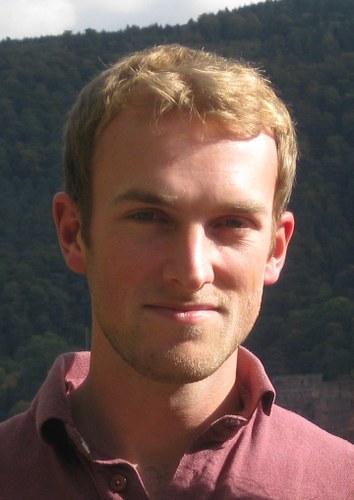Biography
During studies for my medical degree at Cambridge, my interests in computational and quantitative biology led me to work with the Smith group at the Centre for Pathogen Evolution. Following a series of projects with them my work moved increasingly into the area of statistical analysis and mathematical modelling within the context of infectious disease. Completing my medical studies in 2013, I took up a position as a research assistant in the group while studying for an MPhil in Infectious Disease Informatics.
Successful work developing the antibody landscapes methodology, led to an MRC funded phD position, which I completed in 2017. During this time I was lucky enough to participate in several global collaborations with researchers at the Erasmus Medical Center in Rotterdam, the Victorian Infectious Diseases Reference Laboratory in Melbourne, the Oxford Clinical Research Unit in Hanoi and the Sustainable Sciences Institute in Nicaragua, amongst others. Since my phD I have continue to work actively on several projects, taking up a post-doctoral position focussing on work to support planned vaccine trials aiming to use antigenic diversity as a strategy to boost influenza vaccine responses.
Research
My current research interests focus on achieving a better understanding of the immune response to antigenically variable pathogens, with influenza as my study organism. As part of this process I have worked extensively to develop "antibody landscapes", a method to profile immunity against a pathogen as a function of antigenic differences between a range of strains.
My main focus to date has been the analysis of serological data taken from pre and post vaccination samples and from study cohorts monitoring natural influenza infections. At the heart of this work is an effort to better understand how the pattern of pre-exposure immunity goes on to shape the subsequent immune response.
Answers to the questions posed in this area allow powerful inferences to be made about the fundamental basis of the development and maintenance of adaptive immunity but also have incredibly important translational benefits in terms of informing the most effective vaccination policies. In particular, foundational work during my phD established that while the current influenza vaccine strain selection process, based primarily upon achieving the closest antigenic match to circulating strains, is not necessarily the optimal strategy in a population with prior immunity (see Fonville, Wilks et al. 2014).
More recently, my work has expanded from primarily descriptive analyses to include the development of predictive mathematical models of immune responses to vaccination and infection. Although a challenging prospect, this is ultimately what will be necessary to optimise our current influenza vaccination regime through more directly outcome-oriented vaccine strain selection.
Publications
J. M. Fonville*, S. H. Wilks*, S. L. James, A. Fox, M. Ventresca, M. Aban, L. Xue, T. C. Jones, Le N. M. H., Pham Q. T., Tran N. D., Y. Wong, A. Mosterin, L. C. Katzelnick, D. Labonte, Le T. T., G. van der Net, E. Skepner, C. A. Russell, T. D. Kaplan, G. F. Rimmelzwaan, N. Masurel, J. C. de Jong, A. Palache, W. E. P. Beyer, Le Q. M., Nguyen T. H., H. F. L. Wertheim, A. C. Hurt, A. D. M. E. Osterhaus, I. G. Barr, R. A. M. Fouchier, P. W. Horby, D. J. Smith (2014). “Back-boost of antibody landscapes after influenza virus infection or vaccination.” Science
*shared first-authorship
Wilks, S., M. de Graaf, D. J. Smith and D. F. Burke (2012). "A review of influenza haemagglutinin receptor binding as it relates to pandemic properties." Vaccine30(29): 4369-4376.
Gordon, D. L., Sajkov, D., Honda-Okubo, Y., Wilks, S. H., Aban, M., Barr, I. G., & Petrovsky, N. (2016). Human Phase 1 trial of low-dose inactivated seasonal influenza vaccine formulated with Advax™ delta inulin adjuvant. Vaccine, 34(33), 3780–3786.
Fonville, J. M., Fraaij, P. L. A., de Mutsert, G., Wilks, S. H., van Beek, R., Fouchier, R. A. M., & Rimmelzwaan, G. F. (2015). Antigenic maps of influenza A/H3N2 virus produced with human antisera obtained after primary infection. Journal of Infectious Diseases, 213(1), 31–38.
Bodewes, R., De Mutsert, G., van der Klis, F. R. M., Ventresca, M., Wilks, S., Smith, D. J., et al. (2011). Prevalence of Antibodies against Seasonal Influenza A and B Viruses in Children in Netherlands. Clinical and Vaccine Immunology, 18(3), 469–476.

